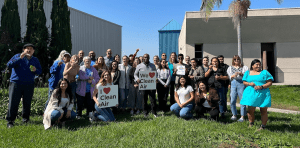2010 and Beyond
If you’ve made it this far, from the bottom of my heart, thank you for reading these. I’m very grateful to Nicole Roberts, our Development Director and Dr. Joe Lyou, our President and CEO for allowing me the time and space to write these blogs and dig into CCA’s history. Like any nonprofit, there’s too much to do and not enough time to do it, so I don’t take it for granted that I was able to spend so much time on this project. It’s incredibly valuable to understand the road we have traveled over fifty years as it gives us a much-needed perspective on how best to face the challenges of the future.
I’d also like to thank Sabrina Schiller, Mark Abramowitz, Denny Zane, Tim Carmichael, Todd Campbell, Dr. Joe Lyou, and Bill Magavern for speaking with me and helping me contextualize and understand CCA’s history. Thank you all for your time, but more importantly for your tireless work to build the Coalition for Clean Air and improve air quality for all Californians.
CCA’s New Old Direction
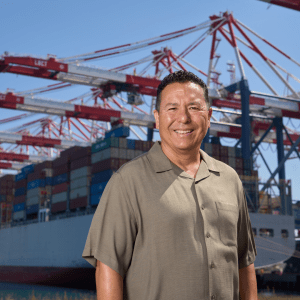
Dr. Joseph K. Lyou started his first day as President and CEO of the Coalition for Clean Air on September 15, 2010. Prior to working at CCA, Joe founded the California Environmental Rights Alliance and worked for the California League of Conservation Voters Education Fund. He was the Governer’s appointee for the South Coast AQMD Board and was eventually appointed to the California Transportation Commission, which he serves on today. Well-acquainted with the Environmental Justice movement and inspired by CCA’s activist roots, Joe was eager to steer the organization back to its advocacy-based work. One of his first actions: hiring the legendary Bill Magavern.
“I first encountered the Coalition for Clean Air in 2001 when I was representing Sierra Club California on pollution issues”, Bill told me. He was introduced to Tim Carmichael during a meeting for AB 32, which we discussed in a previous blog, and when Tim eventually opened the Sacramento office, Bill began working with CCA more frequently. Bill Magavern was the Director of Sierra Club California, and while the work was rewarding, his role became increasingly administrative, and he missed getting to spend most of his time on policy advocacy.
In 2012, CCA’s Policy Director Nidia Bautista moved on to a new role at the California State Senate. Joe and Bill had worked together on various issues since the early 90’s, Bill was familiar with CCA, “and now Joe was running it”. It was the right time and place for Bill to accept the job as Policy Director for CCA.
As we discussed previously, the growing urgency of climate change had affected the environmental movement significantly, and CCA had laid the groundwork to include climate change issues in our scope of work. Bill describes CCA’s niche as the “overlap between climate change and air quality”. The perfect sweet spot, that addresses both local and global concerns, and allows us to fight for CCA’s core mission, while also addressing a threat to our planet that we are all concerned about. “We want to focus on climate solutions, but climate solutions that clean up the air, especially in disadvantaged communities,” Bill told me.
Joe and Bill are a force, individually and as a team. Their accomplishments in this decade speak for themselves. But let’s talk about them anyway…
Smog Check Returns

The idea behind California Senate Bill 210 (SB210) can be traced back to 2016 when Bill Magavern was approached by the chief of staff for Senator Connie Leyva about bill ideas. Bill proposed the idea of a smog check for trucks—an initiative that had been needed for a good, long time. This kicked off a long process with a great pay-off.
Initially, Senator Leyva introduced the bill in 2017. However, despite strong backing, the bill encountered resistance and struggled to gain traction, even though it had the support of the Jerry Brown Administration. They went back to the table, refined the bill language, and re-introduced the bill in 2018. Unfortunately, the Chair of the legislature’s Transportation Committee was downright hostile to environmental progress, and he thwarted the bill for a second time.
Finally, Senator Leyva reintroduced the bill in 2019 and the third time was the charm. This time, with the backing of the Coalition for Clean Air and the California American Lung Association, the bill gained momentum. Bill Magavern recalled, “After doing a lot of zigging and zagging to get past that hostile transportation chair, we got it through both houses and signed by Governor Newsom into law.”
With the new law enacted, it was to be overseen and regulated by the California Air Resources Board (CARB). The Coalition for Clean Air played a pivotal role in negotiating the implementation of this law, and in 2021 the CARB Board agreed to an implementation that was stronger than what staff was proposing.
This year we finally saw the partial implementation of SB210. In January 2024, its impact will be fully realized. Bill Magavern’s asserts, “It will reduce air pollution and save lives more than anything else that the state has done in at least 15 years.”
Transportation Incentives and Regulations
One significant arena where CCA has emerged as a leader is in budget advocacy and incentivizing the transition away from dirty trucks. Joe told me, “We’ve led on making sure there was a lot of incentive funding money available to transition out of dirty trucks into clean trucks and buses. That’s been a niche for us.”
In the realm of budget advocacy, CCA’s is looked to as a leader in negotiating the annual funding plan adopted by the California Air Resources Board (CARB), outlining how allocated budgetary resources will be utilized to promote cleaner transportation initiatives.
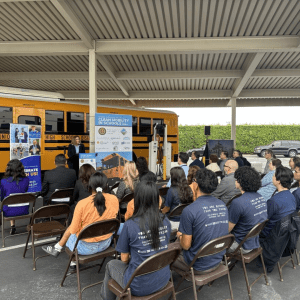
An additional feather in CCA’s cap is their pivotal role in the coalition group that conceptualized and developed both the Advanced Clean Trucks and Advanced Clean Fleet rules. These CARB regulations are instrumental in augmenting affordable clean transportation choices, enhancing transportation system efficiency, and curbing emissions from freight vehicles.
Shankar Prasad, a recipient of the Haagen-Smit Award alongside Bill Magavern, laid the foundation for a legislative body of immense importance. The first bill in this series, SB 535 was passed in 2012 and required California Climate Investment dollars to go to disadvantaged communities. CCA then worked to pass AB 1550 in 2016 which strengthened SB 535. This year, a further stride was taken with AB 126 by Eloise Gómez Reyes, embedding equity requirements into the Energy Commission’s clean transportation program.
The synergy between these three laws—SB 535, AB 1550, and AB 126—creates a harmonious mandate: to necessitate investments in combatting pollution and ensure tangible benefits for disadvantaged and low-income communities.
Continuing the priority of ensuring that underserved communities receive the benefits of transitioning to cleaner transportation alternatives, the Coalition for Clean Air is one of the five lead groups for Charge Ahead, an initiative that aims to expedite the shift towards zero-emission transportation, Bill Magavern notes that legislation championed by Charge Ahead, like SB1275, has had a transformative impact, with billions of dollars invested in cleaner cars, trucks, and buses.
CLEAR Skies Ahead
Joe’s profound passion and expertise drives CCA’s collaboration with allies in the environmental justice movement. His advocacy reflects a deep-seated concern for the everyday people living and working in the most polluted communities. This passion, coupled with the advent of low-cost air quality monitors, led to a new avenue for CCA where we take a more direct role in community-based programs.
The CLEAR program, spearheaded by Dr. Jennifer Lentz, puts the science into action with affordable air quality monitors in high-risk neighborhoods. CLEAR goes beyond advocacy—it educates and empowers communities to champion cleaner, healthier air in their living space.
[row]
[col span=”1/3″]
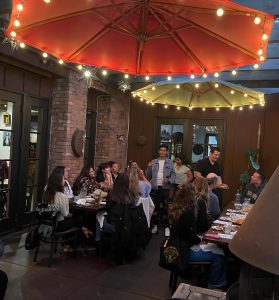
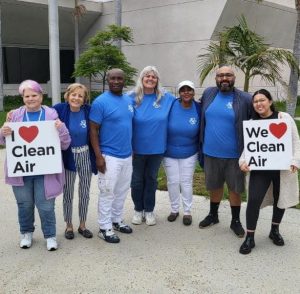
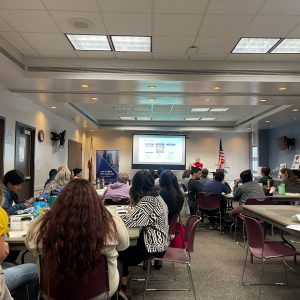
A newer project for CCA is the “All About Air Quality Bootcamp,” a venture Joe called “one of the most inspiring things he’s done.” This two-day workshop is a transformative space where community members delve into the fundamentals of air quality advocacy. Equipped with a comprehensive understanding of the scientific, legislative, and administrative aspects of air quality advocacy, participants return to their communities ready to be champions for clean air. By combining expert training and grassroots empowerment, CCA is not only addressing the consequences of air pollution but actively nurturing a generation of advocates who can spark change at the community level.
The Port of Los Angeles, Part 2
In the last blog, we left off on a theoretical happy ending. And at the time, it was. From Joe’s perspective, the China Shipping lawsuit is “in a single word, frustrating. It’s both a success and a failure.” On the one hand, the settlement required the Port of Los Angeles to produce Environmental Impact Reports (EIRs) on all their terminals. This resulted in the Long Beach Container Terminal taking environmental concerns seriously when they did a major expansion. According to Joe, Long Beach Container Terminal went “above and beyond” the minimum requirements for reducing environmental impact. In fact, in 2018 they were named the “Best Green Seaport Worldwide” at the 32nd annual Asian Freight & Supply Chain Awards. Additionally, the success of the lawsuit gave community members near the airports in Los Angeles the leverage to effectively negotiate a Community Benefits Agreement.

Over time though, it became evident that the Port of Los Angeles had no intention of acting on the settlement they had agreed to. The China Shipping Terminal had continued business as usual, putting profits first, violating the California Environmental Quality Act, and allowing the residents of San Pedro to pay the price. In 2015, it came to light that the City of Los Angeles and the Port of Los Angeles had made a conscious decision that, in light of the 2008 recession, they would avoid the implementation of many of the environmental mitigation measures required by the settlement.
More than 10 years after the lawsuit, the Port of Los Angeles was still not in compliance with California Environmental Quality Act (CEQA) guidelines. So a coalition of community groups and advocates including the Coalition for Clean Air, NRDC, San Pedro and Peninsula Homeowners Coalition, San Pedro Peninsula Homeowners United, East Yard Communities for Environmental Justice sued the Port once again. As frustrating as it can be to fight the same battle repeatedly, “it demonstrates the tenacity and the unwillingness to give up of this organization and the other plaintiffs,” Joe pointed out.
Clean Air Day
Clean Air Day was launched in 2018 by CCA’s former Development Director, Brian Sheridan and consultant John Bwarie. Their goal was to create a statewide call to Californians to take action to improve California’s air quality while leveraging the legacy of the Coalition for Clean Air including Share-A-Ride-Day and our history of bringing coalitions together. Clean Air Day is a powerful opportunity to see communities, businesses, government agencies and more come together on one single day to make a difference and encourage one another to learn about how air quality affects all Californians. Each year, eh event has grown in scale, reaching more and more Californians, and encouraging them to “Take the Pledge”.
Stay tuned for more information on Clean Air Day in 2024!
Looking Towards the Future
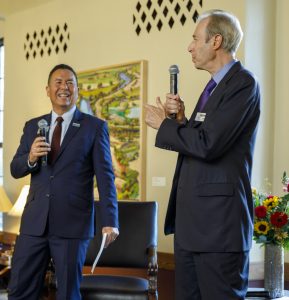
Through this series we’ve explored CCA’s ups and downs. You’ve read our story as we’ve grown from scrappy activists to policy advocacy powerhouses, I can say with confidence that California’s air quality and legislative landscape are different, better, because of the contribution of CCA and its staff and board. The characters of CCA inspire me, and I’m so proud to work for an organization with such a rich legacy. I started working here because I wanted to begin a career working on climate issues, but I didn’t know what that looked like or what road I wanted to go down. Policy advocacy felt like another world, miles away from anything I’d experienced. Working here has made me believe in the power of citizens using their collective voice to create change, and I’m grateful to work for the people that are leading that charge every single day.
So, what’s next for CCA? It’s a tough question to answer. Even though we’ve accomplished so much, there’s still a long way to go. We’re lucky to live in a state that has consistently led the nation in environmental and climate action, but we’re still not in compliance with national air quality standards. Daily transportation and freight movement must be cleaned up, and California has an important role to play in mitigating climate change. On the policy side, Bill stated that we’ll be “pursuing strong safeguards and robust incentives to reduce the emissions that are causing toxic air and runaway climate change.” CARB estimates that particulate and diesel pollution lead to nearly 9,000 premature deaths and thousands of hospitalizations and ER visits. Lives are at stake every day if we can’t clean up our air.
It’s a tall order, but CCA has a dedicated and tenacious staff. With your help, we can work together to end dirty air in California. We can build a future where children don’t miss so many days of school because of asthma. Where fewer people suffer from cancer and heart disease, especially in our most vulnerable communities. And where we can slow and even reverse the effects of climate change.
How can you be part of the solution? Sign up for our email list to stay up to date on our work. Participate in Clean Air Day every October. Or become a supporter. When you donate to CCA, your contribution plays a crucial role in advancing our mission to protect public health, improve air quality, and prevent climate change. Please consider donating today.

